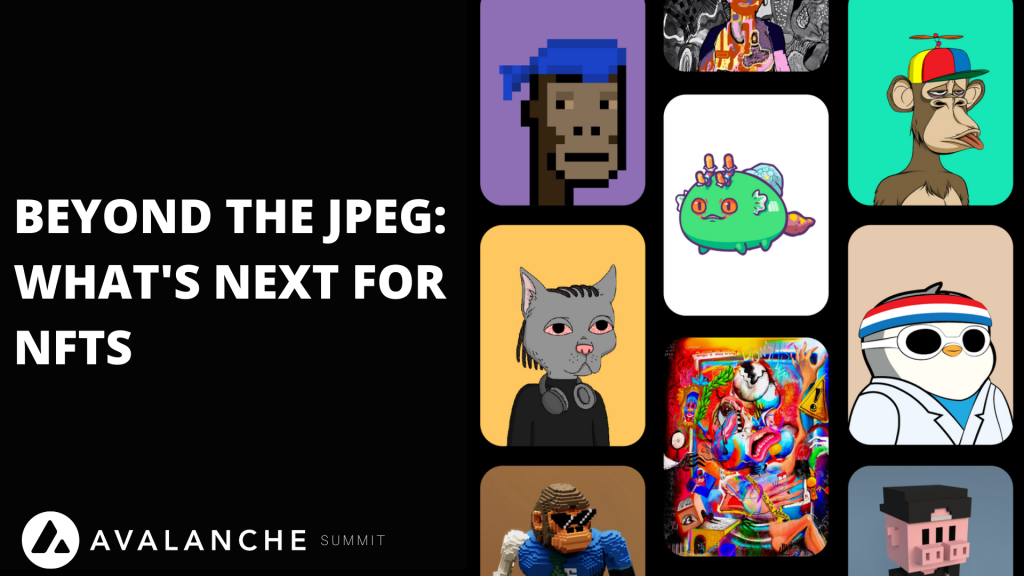Avalanche Summit is a conference for developers, researchers, and makers building on Avalanche at Barcelona, Spain from 22 to 25 March 2022.
The segment on what’s next for NFTs was panelled by Casey Wagner, senior reporter of Blockworks, as the moderator, Calvin Chan, CEO of Legitimate, Jonathan Padilla, CEO of Snickerdoodle Labs, and Harold Eytan, CEO of Particle.

Are we in an NFT bubble?
Jonathan mentioned that there is a lot of hype and energy in the space and like most stuff, it is most likely a bubble. But he is very bullish on the technology behind NFT as it can revolutionise a lot of different applications.
Calvin added that NFT has a lot of significant real-world use cases for instance it can help retailers with anti-counterfeit and also with supply chain and transparency.
Harold sees a bubble in the NFT profile picture (PFP) project space but he thinks that these PFP projects are a new way to gather community to interact with each other.
How NFTs are changing digital ownership
Product authenticity
In this day and age, a lot of products go through a middleman to streamline the supply chain. The issue that this model presents is that the end-user has to trust the middleman that the product being sent to them are authentic.
But time have shown that many counterfeit products have exploited these loopholes and are being sold as authentic products.
NFTs are able to solve this issue as they can be incorporated into the retail product itself. Buyers can easily verify if the product is authentic or not just by scanning the NFT and checking the blockchain.
Psychological ownership leads to an increase in the enjoyment of experiences
Research has shown that ownership of an asset actually enhances the enjoyment of the asset. For instance, art enthusiasts can enjoy a prized artwork but the owner who owned the artwork enjoy it much more than the rest.
Owning an NFT also signifies the digital ownership of an asset and it triggers a chemical reaction in the brain that increases the level of enjoyment of the asset and this makes a whole world of difference to the NFT owner.
What is next for NFTs?
Tokenization of real-world assets
Tokenization of a real-world asset enables it to be fractionalized into many smaller pieces. This essentially allows many investors to own a tiny stake of the same asset.
In December 2021, Particle acquired famed artist Banksy’s ‘Love is in the Air’ for a staggering US$12.9 million. It then proceeds to segment it into 10,000 NFTs which each representing a unique section of the painting.
This enables collectors to be part owners of the artwork with just a small amount of capital. If one day the collector decides to sell it, it can easily be sold off in the secondary NFT market.
Fashion and retail NFT
Every product that a user can hold is actually non-fungible from things like wallets to shoes. It will unlock a new ecosystem for products that is unthinkable.
NFTs will start to pick up once the wider audience realises that NFTs are not all about digital art and pictures as everything is one way or another non-fungible.
Beyond art and collectibles and into personal data
As abstract as it sounds, personal data actually has value to it. Web2.0 giants like Facebook and Google thrive on these data and harvest billion from them through advertising.
While personal data is less sexy than art and collectable, its ramification to the macroeconomy is tremendous. NFT can be the basis of the data model such that an individual can collateralise it and get paid for the large pool of data.
To burn or not to burn?
There are many creative ways on what to do with the physical artwork, the beauty of this space is that they can be as creative as they want.
For instance, Burnt Banksy and Particle adopt two completely different approaches and ideologies on what to do with the physical artwork.
After Burnt Banksy purchased the artwork and tokenized it, they burnt the physical artwork so that only one copy exist and it is on the blockchain.
Whereas Particle found another way to burn the artwork without actually destroying the artefact. Particle “burns” the artwork by donating it to a non-profit organisation.
This retains the cultural artefact and their physical form but at the same time, the owners of the NFT are able to govern the non-profit organisation.
Conclusion
Currently, the NFTs technology is advancing in lightspeed while the legal and regulatory aspects are unable to keep up.
But once those regulatory bodies are in place, NFTs will start to see mass adoption as it presents trillions of dollars in value. Anyone with the vision will definitely be able to reap a lot of the rewards in due time.
Featured Image Credit: thedapplist / Chain Debrief
Also Read: Avalanche Summit: Trends In Crypto Investing And What It Takes For The Next Bull Run To Happen



































